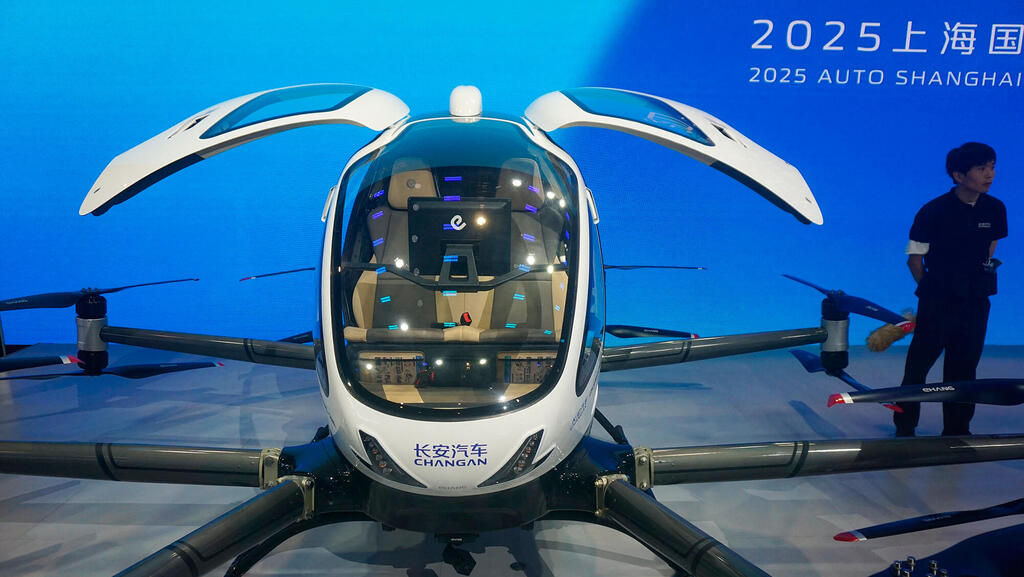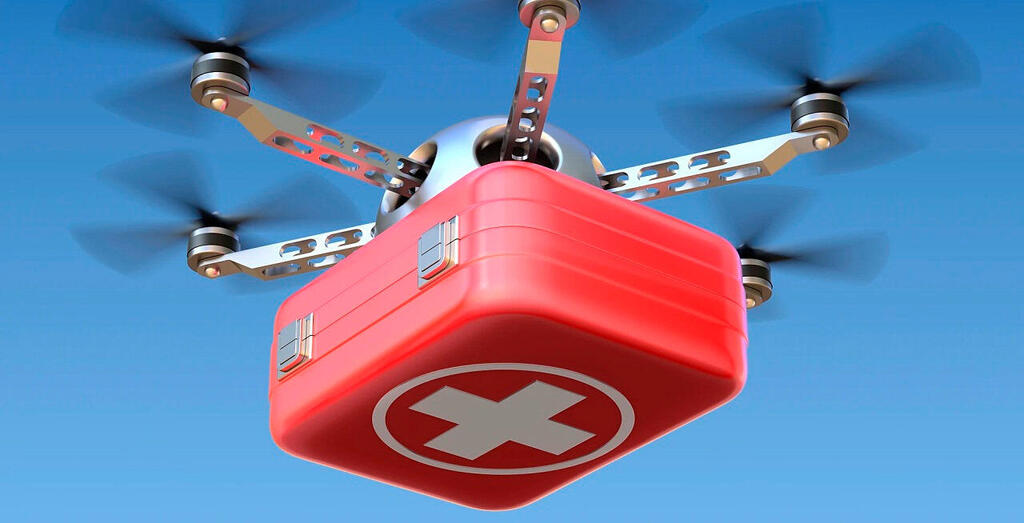The legendary film Back to the Future Part II promised us a host of exciting inventions that would become part of everyday life by 2015. Many of those predictions came true: voice-controlled devices, giant flat screens, smart glasses, biometric locks, video calls, and personalized advertisements are all part of our daily lives now. But there is one invention from the film that we’re still waiting for – the flying car. Although it has been ten years since the “future” date set by Back to the Future Part II (released in 1989), it’s still not possible to step outside your house and hail a quick ride in a flying taxiת at least not in a Western country.
In China, however, the sight of a flying taxi is no longer science fiction. In October 2023, EHang received the world’s first approval to operate an autonomous flying taxi. It now conducts regular demonstration flights in Guangzhou, Shenzhen, Hefei, Zhaoqing, and Shanghai. In April, the company received permission to operate its flying taxi, the EH216-S eVTOL, commercially and began selling tickets for test flights over designated tourist areas. EHang leads a growing group of Chinese companies developing flying taxis, including XPeng AeroHT, TCab Tech, and Volant Aerotech.
2 View gallery


China’s EHang autonomous flying taxi at an exhibition in Shanghai
(Photo: Long Wei / CFOTO via AFP)
A flying car in widespread commercial use may still be years away, but developments in recent years make this vision far more realistic than it seemed in 2015. This is because the flying vehicle for passengers is just the tip, the most eye-catching part, of a much larger and rapidly developing market, especially in China, that remains under the radar for many consumers. This new market, known as the low-altitude economy, is already producing new and surprising products, some of which are in widespread commercial use.
The low-altitude economy refers to aircraft operating at altitudes up to 1,000 meters, providing services in fields such as shipping, transportation, agriculture, public safety and health, logistics, tourism, and emergency response. Aircraft can be manned or autonomous and range from small to large drones. Small drones are used for tasks like aerial mapping, agricultural monitoring, infrastructure inspections, or supporting disaster relief and law enforcement operations. Medium-sized drones deliver packages or food in suburban areas and can provide medical supplies to remote or inaccessible regions. Large drones are designed to transport people for travel or tourism.
While these aircraft vary in design and size, they typically share common features: they are electrically powered, capable of vertical takeoff and landing (eVTOL), and equipped with multiple rotors, usually at least four. This configuration allows them to operate in dense urban environments while reducing air and noise pollution.
According to research firm Bernstein, the low-altitude economy is expected to grow from $5 billion this year to $24 billion by 2030. eVTOL aircraft are projected to play major roles in aviation, logistics, emergency response, agriculture, tourism, and security. While the U.S. and Europe are seeing significant developments, with companies like Google’s Wing and Zipline, China is widely considered the leader, home to the sector’s boldest and most advanced projects. This is thanks to strong government support, including designated strategic growth zones and pilot areas, and policies that actively promote innovation in the field.
Last year, AutoFlight achieved several milestones, including the longest flight with a single battery, 250 kilometers, and the first intercity unmanned autonomous flight that crossed a large body of water. The flying taxi sector within the low-altitude economy is attracting huge interest from investors across the U.S., Europe, and China, who have already invested billions in companies in the space. Analysts estimate that 10,000 flying taxis will be sold worldwide by 2040.
Yet regulatory and safety hurdles mean the market isn’t expected to take off overnight. In the meantime, many companies are pivoting to logistics applications with the aircraft they’re developing. AutoFlight, for example, has signed a pilot deal with Chinese delivery giant ZTO Express.
Chinese companies are also pushing the envelope with original designs and applications. This year, Chinese electric car maker BYD unveiled a collaboration with drone giant DJI to integrate a drone into the roof of its vehicles. The drone can launch while the car is moving, photograph the surroundings, and return to its docking station automatically. Its practical uses are unclear, for now, it appears more like a marketing stunt than a tool for daily use, but it demonstrates China’s ability to roll out surprising innovations not yet seen in the West.
Other developments are more practical and ready for commercial use. Joyance Tech is developing a small drone capable of spraying liquids with high pressure, up to 10 liters per minute, in precise directions. It can reach heights of up to 150 meters and fly for 12 to 18 minutes, making it useful for cleaning hard-to-reach areas like skyscraper facades or solar farm panels. Prices start at $8,000 per unit.
Haishen Medical Technology, a subsidiary of the state-owned shipbuilding giant CSSC, unveiled an emergency medical drone in April. The company says it can carry up to 300 kilograms, evacuate injured people from remote areas, and provide life-saving treatments such as defibrillation and real-time video calls with medical staff. The drone is designed to operate in harsh conditions, from -25°C to 46°C, and at altitudes up to 5,000 meters.
JOUAV is developing a hybrid drone that combines helicopter-like rotors with airplane-style fixed wings for search-and-rescue operations in tough terrain. Equipped with thermal cameras, sonar, lidar, and AI capabilities, the drone can fly for up to 480 minutes at speeds of up to 100 km/h and scan search areas within a 200 km radius. It can identify heat signatures or visual signals of people in distress and relay their exact location to ground teams.
In logistics, both Chinese and Western companies are working on small drones for package delivery. In May, CH UAV completed the first test flight of its CH-YH1000, an autonomous heavy-duty delivery drone that can carry up to 1.2 tons over distances up to 1,500 km. The aircraft takes off and lands like a plane, not a traditional drone or VTOL, and needs only a short runway. It can fly continuously for 10 hours at an altitude of 8,000 meters. The company calls it a “flying van” and hopes it will make deliveries to remote areas faster and cheaper.








